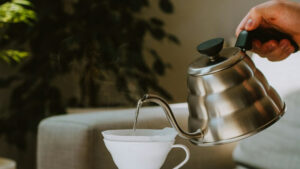
Which Type Of Materials Can You Use To DIY Your Travel Kettle?
Every travel kettle is a potential canvas waiting to be transformed into a piece that not only brews your favorite drinks but also showcases your

Whether you’re brewing your morning coffee at a campsite or making an afternoon cup of tea on a road trip, a travel kettle is essential for enjoying hot beverages on the go.
But just like at home, a buildup of mineral deposits, stains, and odors can occur after repeated use. Learning how to properly clean your travel kettle is important for maintaining a fresh taste and avoiding funky flavors.
In this comprehensive guide, we’ll cover everything you need to know about cleaning your portable kettle. I’ll provide tips on cleaning frequency, walk through effective cleaning methods for stainless steel and plastic kettles, and share storage suggestions. With the right techniques, you can keep your travel kettle spotless and taste great trip after trip.
How often you should clean your travel kettle depends primarily on two factors:
The mineral content in your water impacts how rapidly the mineral scale builds up. Hard water with high levels of calcium and magnesium requires more frequent cleaning. Soft water allows you to stretch out cleaning sessions a bit more.
To determine if you have hard or soft water, there are a few signs to look for:
You can use water testing strips to measure the precise grains per gallon (gpg) of your tap water. Anything over 10 gpg is considered very hard water. If you have hard water at home, assume you’ll need to clean your travel kettle more frequently when using local water sources during travel as well.
A kettle used daily needs cleaning more often than a kettle used sporadically. Oils, stains, and odors accumulate faster with repeated boiling. For a travel kettle, estimate cleaning every 2-3 trips on average.
Factors like the length of each trip and how many times you use the kettle to boil water each day impact cleaning frequency needs too. Longer trips and daily usage mean mineral deposits, limescale, and residue will build up more rapidly inside the kettle.
If you’re only using the travel kettle to make a cup or two of coffee in the mornings on weekend camping getaways, you likely only need to deep clean it every 5-6 trips. But if you are on weeks-long overseas adventures and making tea several times a day, cleaning every 1-2 trips is a must.
Here are some signs it’s definitely time to clean your portable kettle:
Routinely inspecting the inside of your kettle helps identify issues before they compromise taste. Now let’s go over the best cleaning methods.
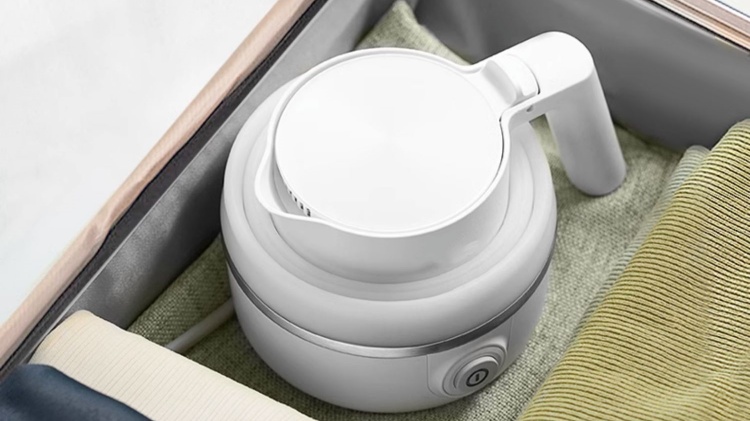
Stainless steel travel kettles require a bit more effort to clean thoroughly. Here are some tips for tackling mineral buildup and stains:
For light cleaning, simply boil water with baking soda and lemon juice. The citric acid helps break down deposits, while the baking soda acts as a gentle abrasive.
To use this method:
Be sure to fully rinse away lemon juice residue, as it can impart a sour taste if left on stainless steel surfaces.
For tougher stains, let the empty kettle soak overnight, filled with either undiluted white vinegar or cream of tartar solution made with hot water. The acidic solutions help dissolve mineral scales.
To make the cream of tartar solution:
Both vinegar and cream of tartar effectively break down tea stains, coffee oils, limescale, and hard water deposits overnight.
Drop a stainless steel cleaning tablet into the kettle filled with water and gently boil. These tablets contain oxalic acid, which breaks down tea stains, coffee residue, and mineral buildup through chemical reactions.
Look for tablets specially formulated for stainless steel kettles. Follow package instructions for the number of tablets to use based on kettle capacity and boil time. Scrub with a bottle brush after boiling for best results.
Use a narrow bottle brush with durable nylon bristles to manually scrub away stubborn deposits inside the kettle. Pay special attention to the spout and lid opening.
Dip the brush in vinegar or baking soda paste to increase cleaning power. Carefully scrub areas with visible stains, being cautious not to scratch the stainless steel interior.
Wipe down the exterior with a soft cloth, mild dish soap, and water. For polished stainless steel, finish by rubbing in a small amount of olive oil to maintain the shine and prevent water spots.
Avoid using abrasive scrubbers or cleaners on the outside, which can cause scratches. Take care not to get the handle area too wet.
Following these steps keeps stainless steel kettles fresh tasting and looking great trip after trip. Now let’s look at cleaning plastic travel kettles.
Plastic kettles generally require less intensive cleaning than stainless steel. Here are some simple yet effective methods:
Add a couple of drops of dish soap to the kettle and fill it with very hot water. Cover and shake vigorously, then let it soak for 30 minutes. The heat and soak time allow the soap to penetrate stains.
For tough odor removal, use this method, but substitute 2 tbsp baking soda for dish soap. The baking soda will absorb and neutralize stubborn smells.
Rinse the interior with either lemon juice or plain white vinegar. Let it sit for 15-20 minutes before rinsing it away. The acid helps remove light stains and residue.
Straight vinegar works a bit better than lemon juice. For extra cleaning power, boil water with 1 cup of vinegar for 5 minutes, then let the vinegar solution sit overnight in the kettle before rinsing.
Make a paste with baking soda and water. Gently scrub stains with a soft cloth or sponge. Rinse thoroughly after scrubbing.
The abrasiveness of the baking soda loosens staining, while the alkaline minerals help deodorize and neutralize acids from coffee and tea.
Use a commercial plastic descaling product or solution of water with lemon juice or vinegar every 1-2 months. This prevents mineral scale buildup.
Remember to descale your kettle before longer trips where you will rely on it for hot water every day. Preventing scale is easier than removing it!
Wipe down the outside of the kettle with a damp cloth and mild detergent. Avoid abrasive scrubbers that could scratch the plastic.
Be extra careful when cleaning the exterior plastic not use cleaners that can react with and degrade the plastic. Stick to dish soap and baking soda.
Repeat these steps as needed for clean-tasting water and coffee or tea every time you travel.
After cleaning your travel kettle, proper drying and storage also help prevent nasty surprises on your next trip. Here are some tips:
You can also run a rinse cycle with half a lemon squeezed into the kettle to help prevent scale buildup in storage.
Proper drying and storage Keep your travel kettle in optimal shape for great-tasting drinks every time you head out on the road or trail.
With consistent cleaning and care, a quality travel kettle should last for years. But if you notice any of the following, it may be time to replace your portable kettle:
A damaged kettle poses safety hazards and risks contaminating your drinks. Always inspect your kettle closely before heading out to ensure it is still in good working order.
While travel kettles are inexpensive, it’s wise to invest in a quality model at the outset. A more durable kettle made of quality materials will have a longer lifespan and require fewer replacements.
Look at warranties when purchasing, and read reviews to choose a kettle with few reports of premature damage or defects. With careful selection, your travel kettle could last 5 years or more.
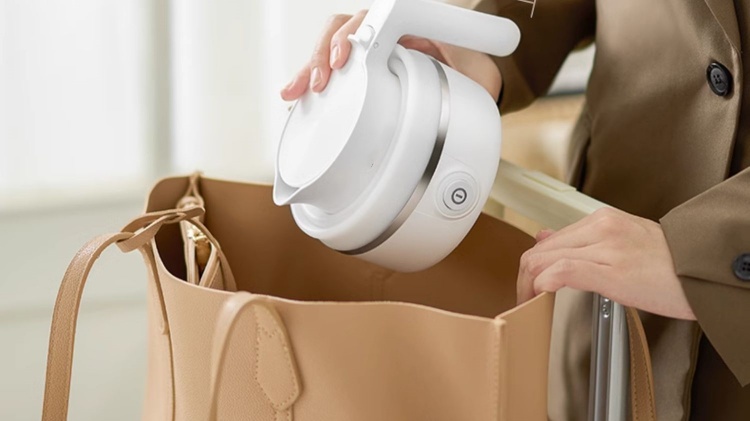
Even if you follow all the right cleaning methods, you may occasionally encounter some challenges getting your travel kettle spotless. Here are some common issues and fixes:
With some focused troubleshooting, you can target and treat specific cleaning challenges that arise over time and after many uses.
While traveling can get messy, your morning coffee and relaxing tea breaks don’t need to be an unsavory experience. With proper cleaning techniques for stainless steel or plastic kettles, you can maintain pure-tasting water for all your portable brewing needs.
Remember to assess cleaning needs frequently based on water hardness and usage levels. Follow the tips provided to tackle mineral scales, stains, and odors. And be sure to store your clean kettle properly between trips.
With this comprehensive guide, you have all the information needed to keep your trusty travel kettle fresh and delicious, trip after trip. Just put these tips into practice and enjoy flavorful hot drinks wherever the road takes you!


Every travel kettle is a potential canvas waiting to be transformed into a piece that not only brews your favorite drinks but also showcases your
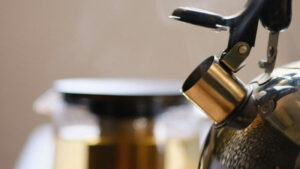
When you think of customizing your travel tea kettle, the idea of adding LED lights probably isn’t the first thing that comes to mind. However,
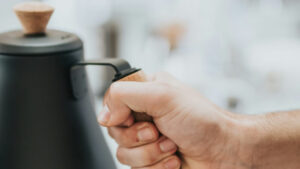
Every travel kettle enthusiast knows the pain of a lukewarm cup of tea or coffee. It’s like expecting a hug and getting a handshake. But

There’s something uniquely comforting about enjoying a hot cup of tea while on the road, but keeping your travel tea kettle warm and protected can

Every travel kettle is a potential canvas waiting to be transformed into a piece that not only brews your favorite drinks but also showcases your
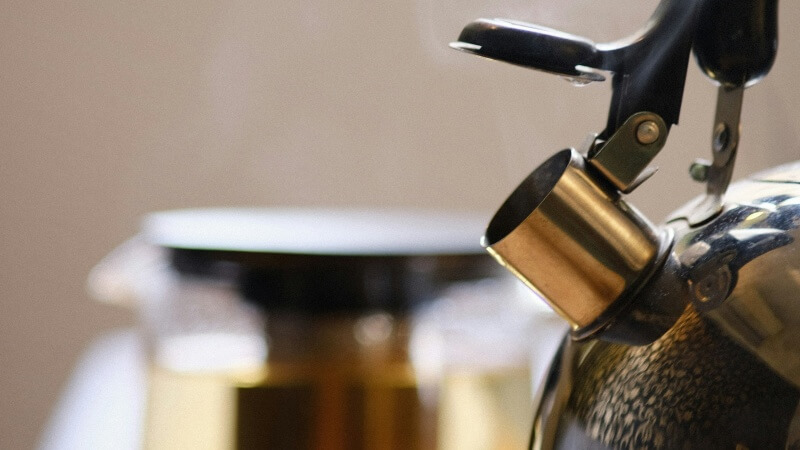
When you think of customizing your travel tea kettle, the idea of adding LED lights probably isn’t the first thing that comes to mind. However,

Every travel kettle enthusiast knows the pain of a lukewarm cup of tea or coffee. It’s like expecting a hug and getting a handshake. But

There’s something uniquely comforting about enjoying a hot cup of tea while on the road, but keeping your travel tea kettle warm and protected can
Copyright © 2024 brewgotravelkettle. All Rights Reserved.